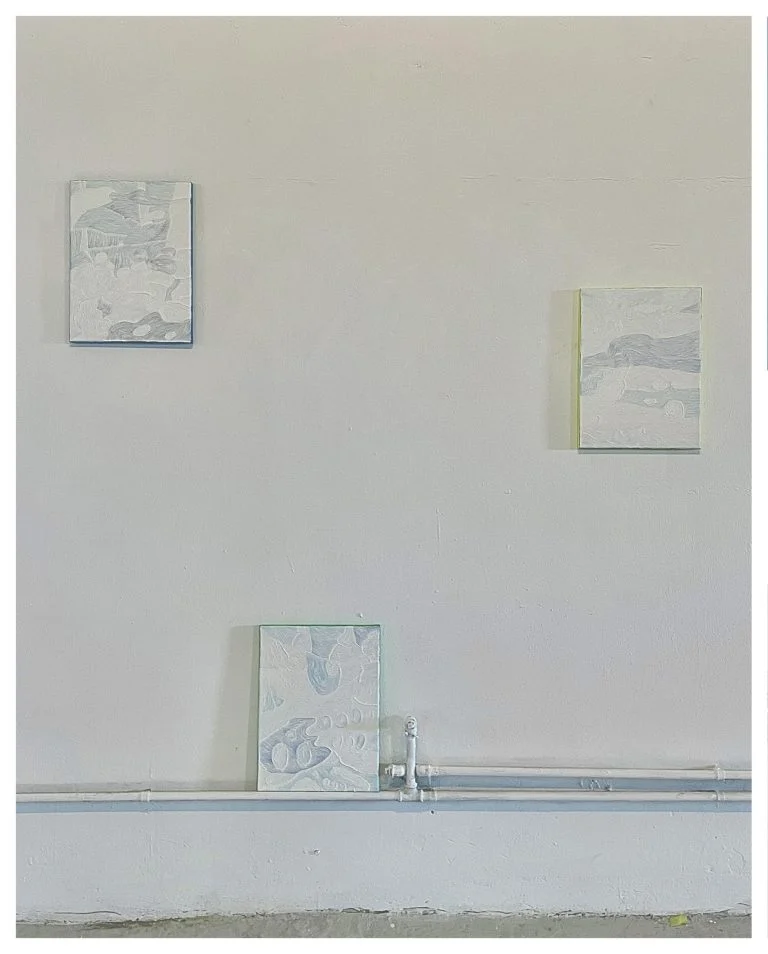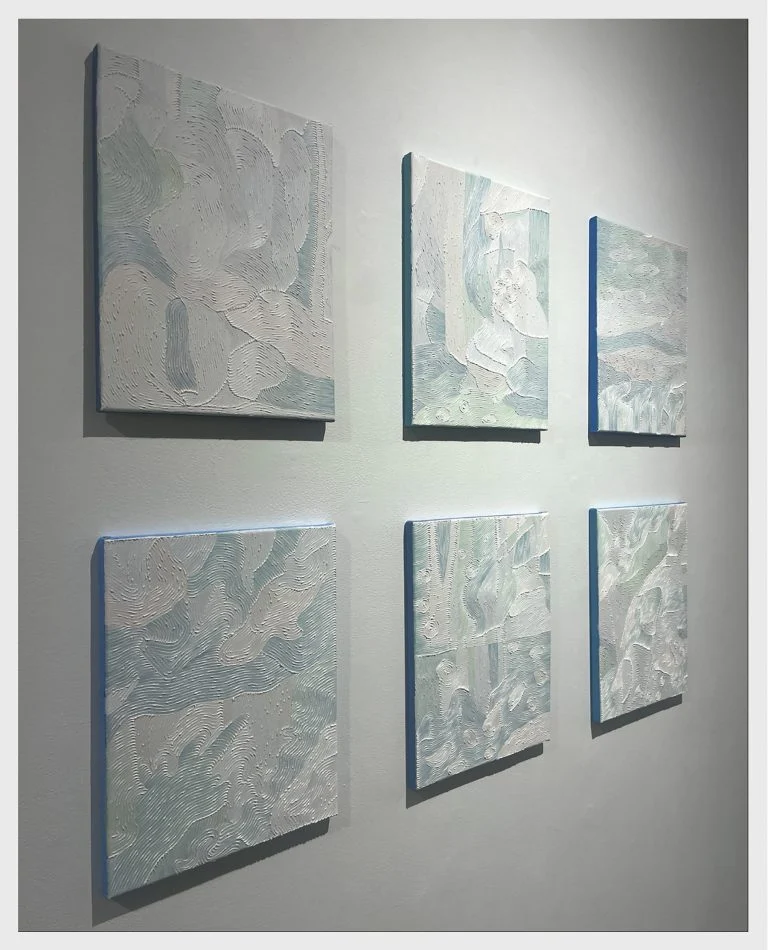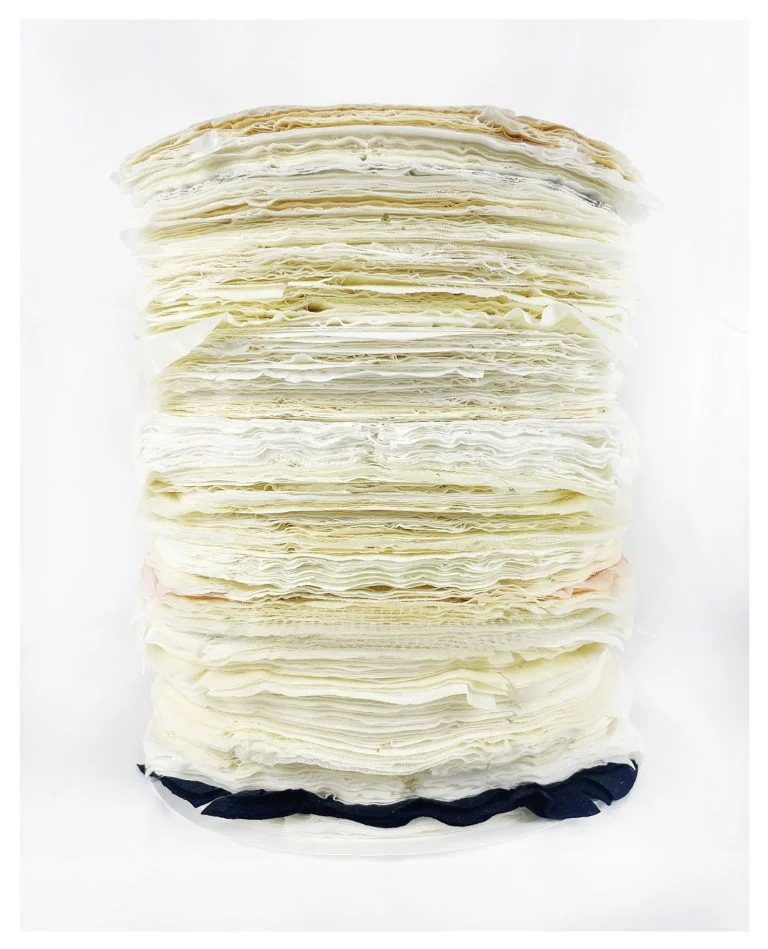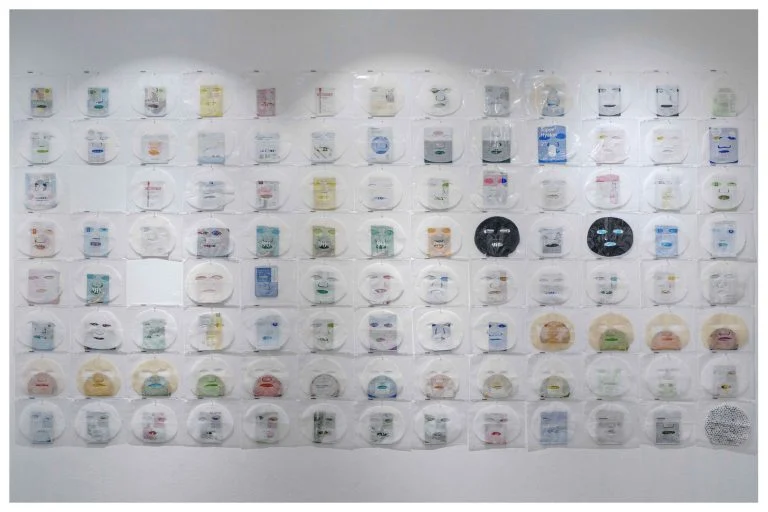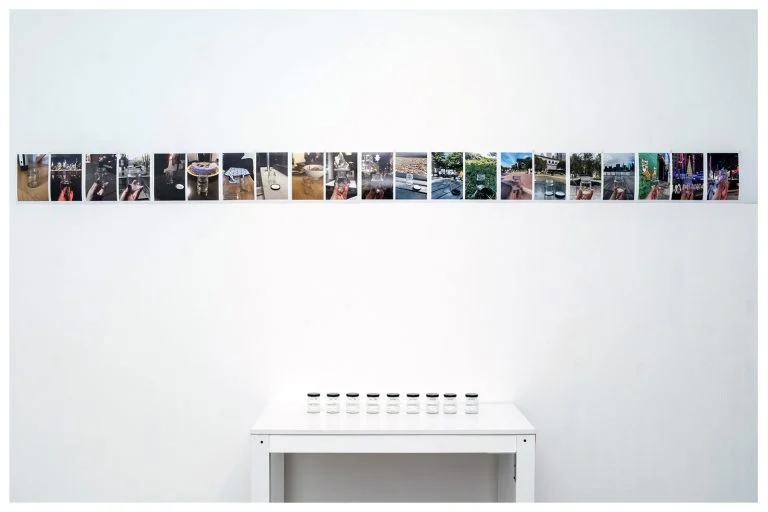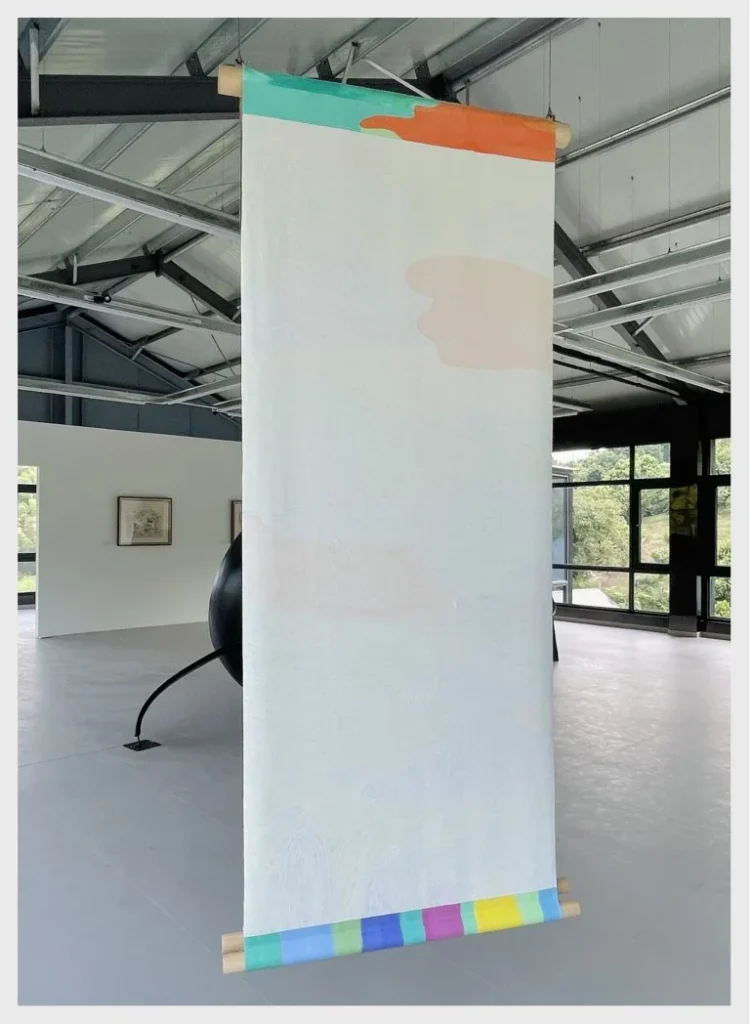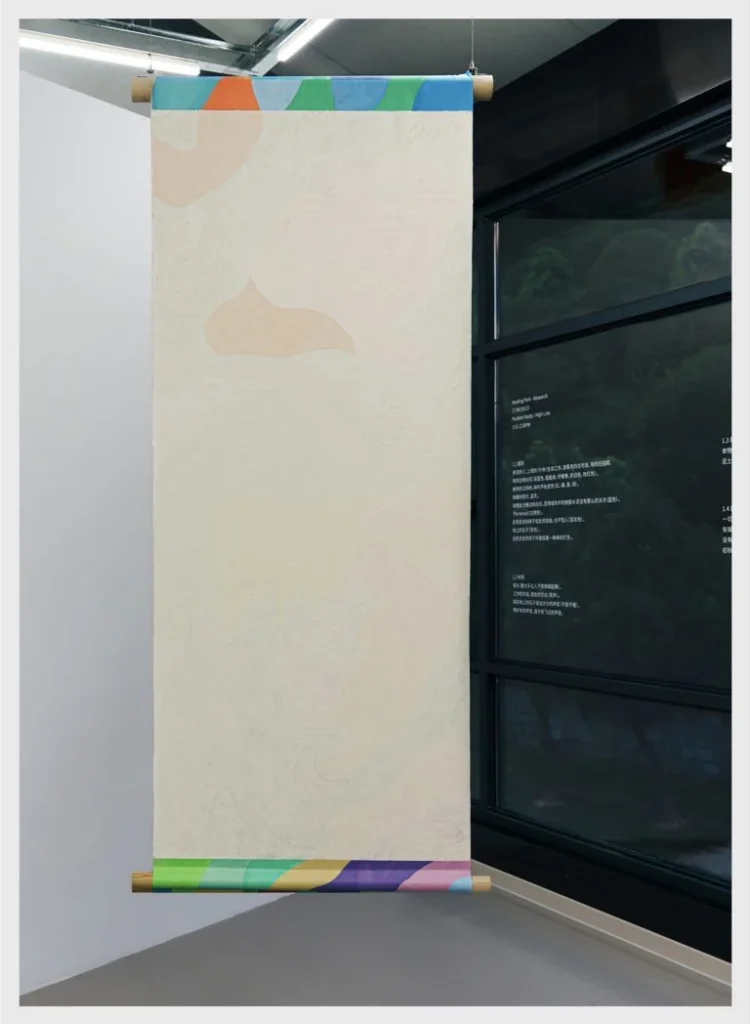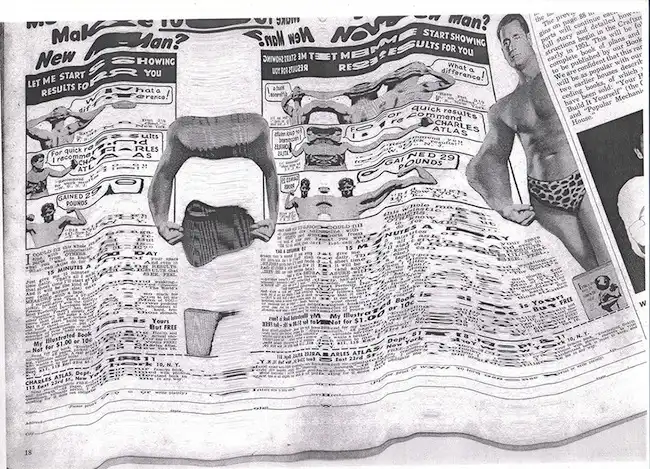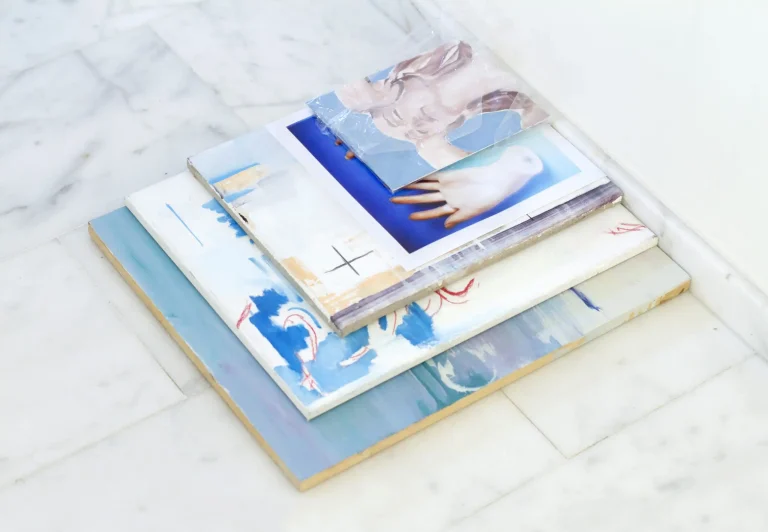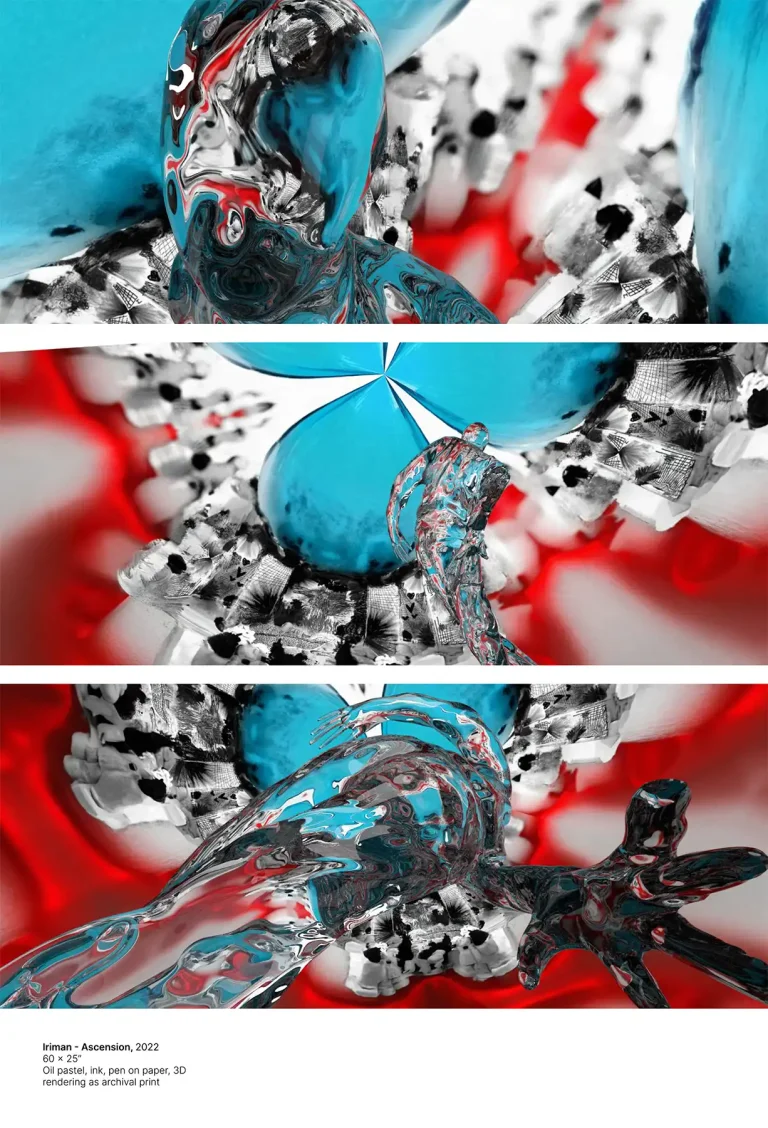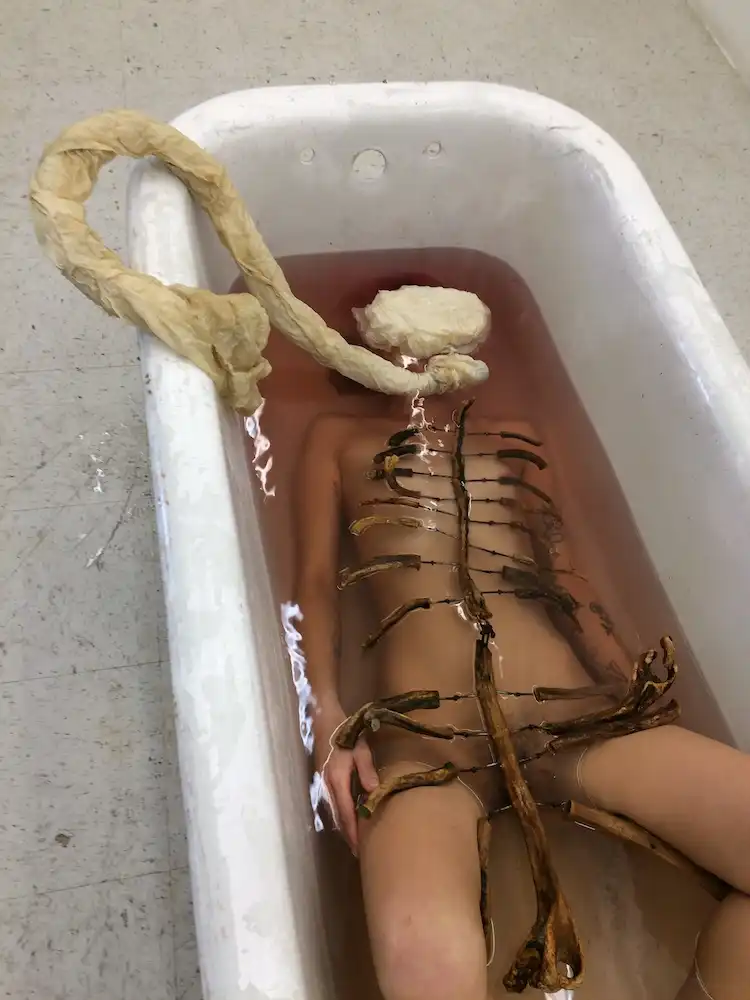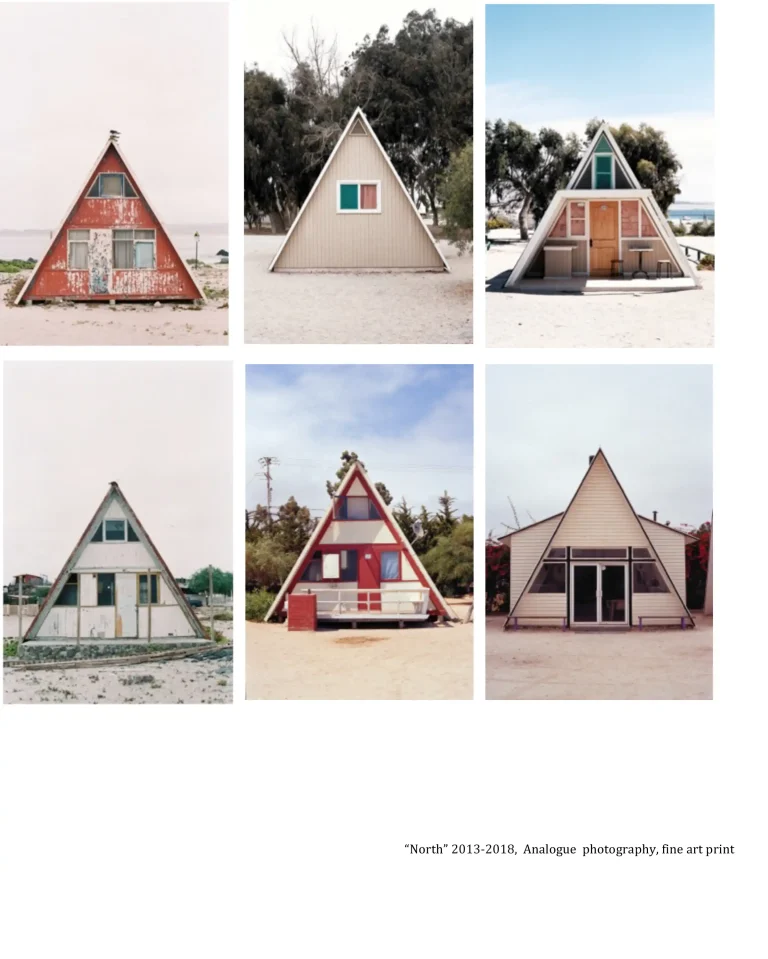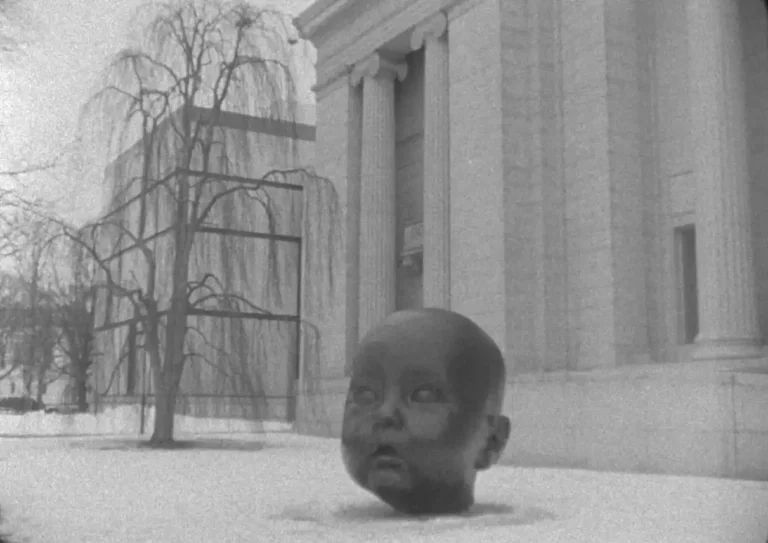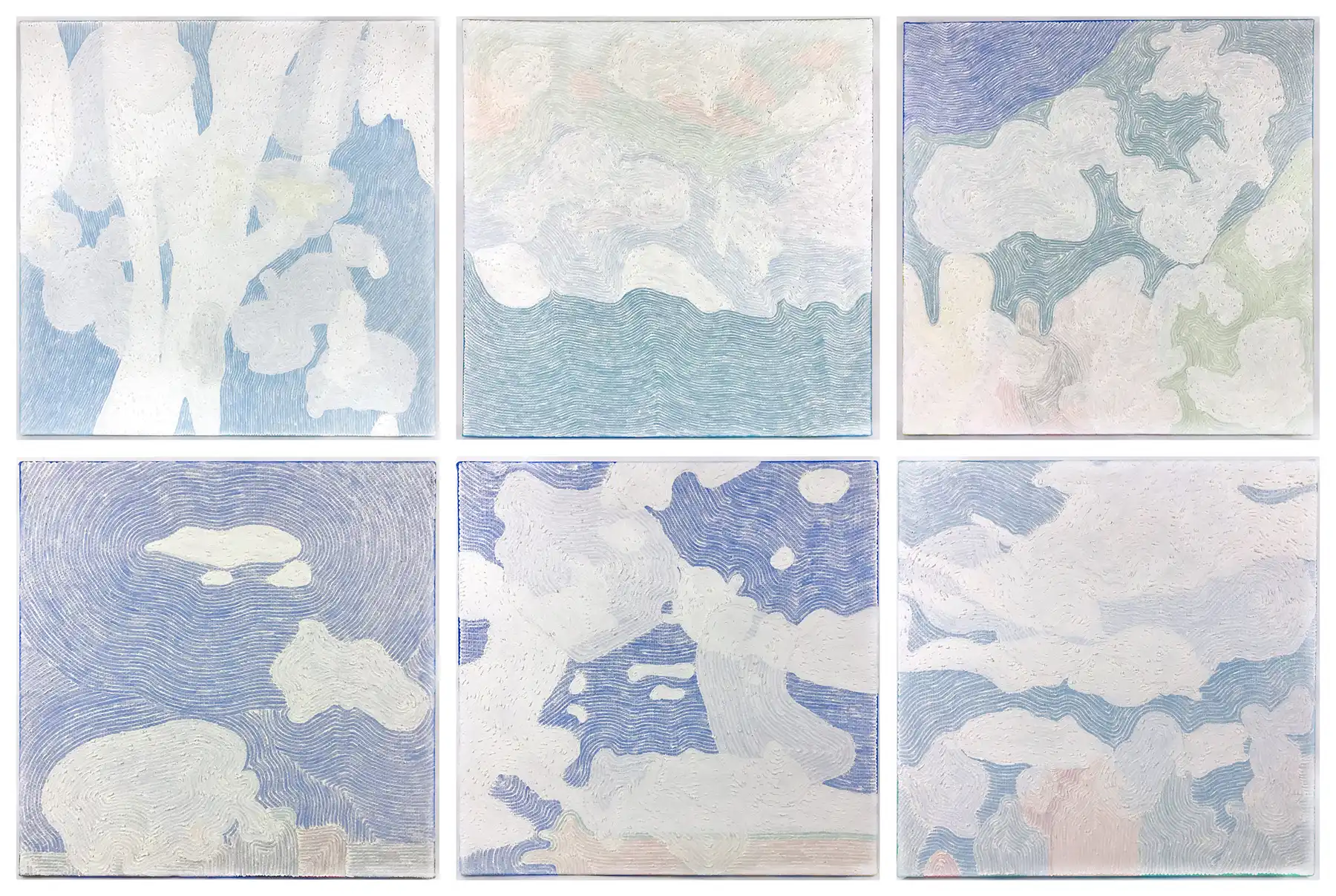
Chi Zhang is GlogauAIR resident
from October 2024 to December 2024
Chi Zhang is a visual artist, art educator, and art professional. Her practice spans installation, painting, and documentation, focusing on personal narratives shaped by diverse social contexts. Zhang’s art explores inner peace, the beauty of emptiness, and fostering meaningful connections, encouraging reflection and empathy in a complex social climate.
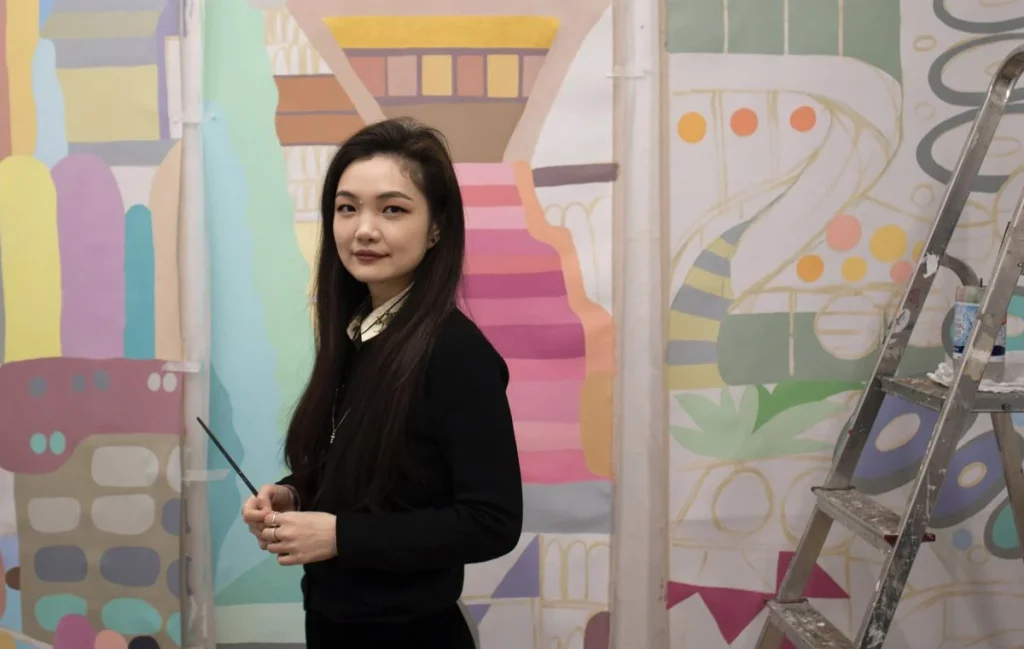
Meet the Artist
Can you give me a little bit of an introduction about yourself?
I’m Chi, originally from China. I was born and raised in Beijing, but my family is in Shanghai, so I’ve spent much of my life moving between the two cities. I completed both my undergraduate and graduate studies in New York and have been dividing my time between these three cities for the past two decades.
I earned my MFA from the School of Visual Arts, graduating ten years ago. Since 2016, I’ve worked as an art educator in China, teaching high school art, including AP, A-level, and IB courses. Currently, I’m working part-time while dedicating myself fully to my art practice.
Do you have a specific art style or artist that influences you?
Yes – there are a few artists that have been influencing my art ever since my school years. For my 2D works, like my paintings and drawings, I would say Robert Ryman and Agnes Martin. I look up their work from time to time, to see the way they’ve produced their work, and how they think. More recently, there’s this artist Song Dong, and he does work related to the engagement of daily life. He used a lot of mundane objects, so I’d say he influenced me to do my facial mask project, for sure. Yoko Ono, too, with the simplicity of our life and the universe … connection, everything.
In terms of style, I will always say my work is minimalist – I always try to be as simple as possible, but there are a lot of stories and layers underneath.
Could you talk a little more about your face mask project?
For a lot of my work, not just that one, they don’t begin as an artwork in the beginning. They’re more like small things I do everyday, and then there’s a point that I feel that I have something I could make into artwork. For the facial mask project, it actually started in 2017, and that was the time when I started working as an art teacher – I wanted to be an artist, but I found it more sustainable to be a teacher, to work and make money and then at the same time, practice art. I committed a lot of time to learning so many things, building up my own portfolio … even though I spent so much time doing that, I still managed to spend almost an hour or two every night doing my nighttime skincare routine.
I would say that’s a very normal thing in Asia. People don’t think of that as crazy, and I think it’s just the whole social norm there. You have to fit the beauty standard – you have to look young, and look lean, and have pale skin, which is a really trendy thing that has been going on for thousands of years.
When I see my students, they look up all these influencers on the internet, and they skip meals because they want to look a certain way, which is very unhealthy, because I feel like that’s not the point of life. I will tell them it’s more about eating healthy, exercising, travelling, meeting friends, in order to be both physically and mentally healthy. That’s more important than just having a good appearance.
Now this project has two parts – one is the used facial masks, all the ones I’ve used, all in a stack. I’m planning to collect them to the point that they’re my height, as a self-portrait. I don’t know how long that’s going to take – probably another 20 to 30 years. Another part is the packaging, because I consume so much of them – the brands from Asia, the Swiss brands, French, and American brands. I want to try something new, and even now in Berlin, I want to try something locally. It’s like a documentary.
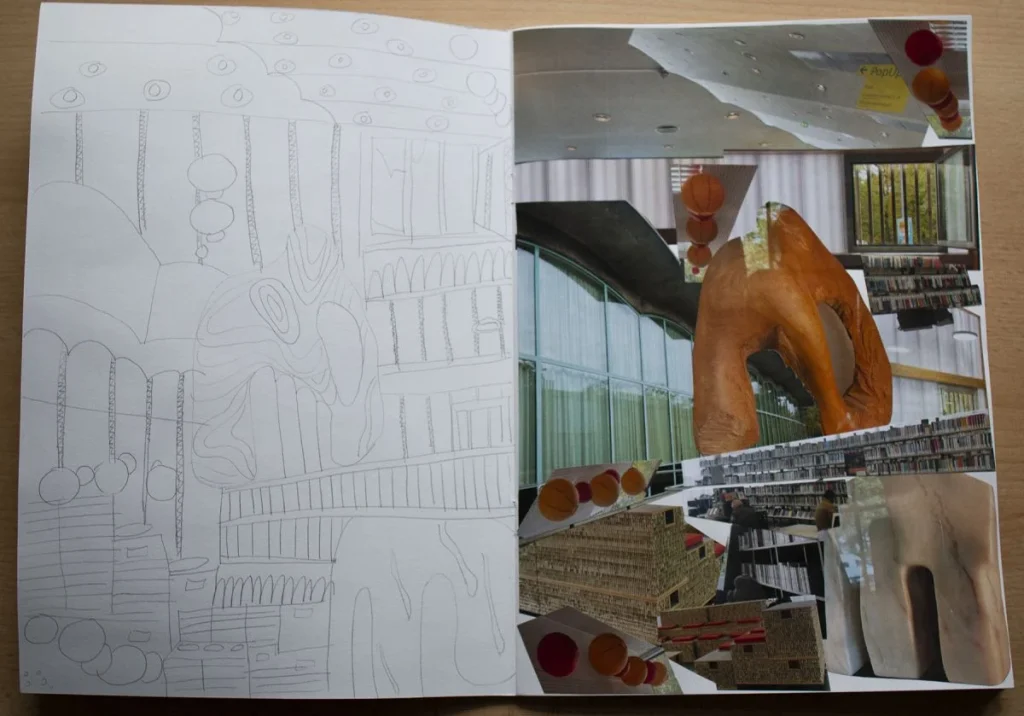
How do you think the Youth Project intersects with the theme of healing?
I think there’s an overlap. I get questions about what is healing to me. Healing can be a momentary and temporary thing. For example, I love chocolate croissants, so if I’m craving it and I have one, that little bit of healing comes from it. Nothing lasts forever, and everything is temporary, so I want to provide this momentary healing aspect to people’s lives. It’s the same as a facial mask. The facial mask is a day-to-day, mundane thing, and my work is a mundane thing as well. The masks are necessary in order to heal the surface of your skin, so there are layers and aspects to healing within that.
How has Berlin been influencing your practice?
A lot of ways. After visa issues, I had to postpone my residency to the fall, so the very gray, gloomy weather changed the aspect of Berlin for me. I definitely feel like there is a huge weight in the city that comes from the war and the history. The city is like a giant museum from the war. Things move on, but there’s a part that’s still the same. You’re healed, but it’s not completely. There’s a Japanese technique of creating a broken vase, but you’re putting it together with a gold string. So you see that it’s broken, but it’s been put back together, so it’s more beautiful. This is how I feel about Berlin.
I did the first healing painting series in Beijing, during COVID, but it’s such a different city from Berlin. The history of Beijing – going thousands of years back – feels very distant, so I feel less of a connection. With Berlin, it’s not just the city, it’s the history.
I know you put a lot of collages together with photographs in Berlin, like one with photographs from a library. Would that be an example of how themes of healing within the city are present in your work?
Yes – originally, I was just thinking because Berlin can be really loud, with a lot of things going on, the library would be the perfect place to be at this time of year. But this one library I went to, you do see the history, and when you’re in that spot, it’s timeless. It feels like you’ve time traveled. I want my work to have that layer of time, space and healing, with everything combined together. [The paintings based on the collage] aren’t finished yet. I’ve put down the colors first, and the base paint.
For the color scheme for these paintings, do you intuitively apply the colors? How do you go about that?
The colors are actually a reference from the collage. I do use a little bit of intuition – for example, the top one is actually this huge sculpture in that library, and it’s mainly white, but this whole space is a very orange and warm color tone, so I didn’t want the white color to be involved with that sculpture. In libraries, you get lots of good, natural light, which adds a lot of life. I want it to be lively, in a way, and I don’t want these works to be so down, like the color of the season now. They’re different from the ones I did in New York and in Iceland – I used a lot of earth tone in this series – maybe that’s how I feel about the city. Iceland is very blue and cold. And then the New York series is super vibrating.
What plans do you have after the residency?
For the first half of the year, I’m going to work on paintings, because I have a lot of photographs and research documents I did for this year in Iceland, in New York, and in Berlin, and I wanted to finish them. I’m going to a residency in Japan next year, and that’s gonna be in the countryside, very calm and peaceful. I’m in conversation with people about shows coming up – one in Japan, and one in China as well.
I still feel like I need to be distilled with all these thoughts and ideas I want to put together. I want to have solid time working with them. That’s what I did over the summer, in China. I was in the mountains for a while. It was nice, but I got kind of bored, because it’s a mountain, nothing else is there. I still consider myself a city person.
Statement
Chi Zhang is a visual artist, art educator, and art professional who lives and works between Beijing, Shanghai, and New York. Her multidisciplinary practice encompasses installation, painting, drawing, and the documentation of daily activities, all of which revolve around personal narratives and perceptions shaped by diverse social contexts. In an increasingly complex and tumultuous social climate, Zhang’s art explores the pursuit of inner peace and the beauty of emptiness while fostering meaningful conversations and connections beyond the confines of the artwork. Through her exploration of the human experience, Zhang offers a personal perspective on contemporary society, encouraging viewers to reflect both inwardly and outwardly with greater empathy and understanding.
GlogauAIR Project
In 2022, during the third consecutive year of COVID-19, as the world began to reopen and life slowly returned to normal, I found myself still facing ongoing lockdowns, frequent COVID tests every 72 hours in Beijing, and endless international travel restrictions. This surreal time brought intense challenges, causing extreme emotional strain and prompting me to embrace the concept of healing as a daily art practice—almost like a religious routine for emotional recovery.
My art practice became a powerful portal for healing, fostering new dialogues and connections around well-being. This experience has reshaped my understanding of what is truly important in life. At GlogauAIR, I aim to further explore this therapeutic aspect of art and create new work that reflects the healing experience in Berlin.
The project will take the form of an installation featuring a variety of paintings and mixed-media works. These pieces will come together to create a temporary space where visitors can find moments of peace and comfort. Audiences will be invited to engage with the installation, as this interaction is intended to enhance mental and emotional well-being, fostering a deeper, more meaningful connection to the work.
CV Summary
EDUCATION
- 2013 Master of Fine Arts (MFA) in Fine Arts, School of Visual Arts, New York, NY, USA
- 2010 Bachelor of Arts (BA) in Studio Art, minor in Art History, Stony Brook University, Stony Brook, NY, USA
SELECTED GROUP EXHIBITIONS
- 2024 A Journey of Unbound Mind to the Worldly Wanderings (乘物以遊心), curated by Zhaoqi Yu, Golden Alchemist Gallery, Yuyao, Ningbo City, Zhejiang, China
- 2024 Ritual of Repeating Insubstantiality (循環末微的儀式), curated by Ivy Haoying Huang, Chinese American Arts Council Gallery 456, New York, NY, USA
- 2023 Mirror, Portal, NARS Foundation Season IV Residency Exhibition, NARS Foundation Main Gallery, Brooklyn, NY, USA
- 2017 New Sound — SFK International Art Education Faculty Exhibition, Li Peak Modern MOMA, Beijing, China
- 2016 Between Senses, curated by Grace Noh, Gallery House, Brooklyn, NY, USA
- 2015 Shou Qi — Make Object (守器 — 造物), Shijiazhuang Art Museum, Shijiazhuang, Hebei, China
- 2015 MiA: Beijing Station:: First Chapter, DDC Space, Beijing, China
- 2015 5 en Sync, Shi Yu Tang Art Space, 798 Art District, Beijing, China
- 2015 GoArt Festival, Zhonghai Plaza, Beijing, China
- 2014 Group Velocity, curated by Summer Guthery, Interstate Projects, Brooklyn, NY, USA
- 2014 330 Bond Street Art Show, Brooklyn, NY, USA
- 2013 WE OBJECT, curated by Wallace Whitney, SVA Chelsea Gallery, New York, NY, USA
- 2012 Summer Residency Exhibition, Pantocrator Gallery, M50 Art District, Shanghai, China
- 2010 Printmaking Exhibition, Tabler Art Gallery, Stony Brook University, NY, USA
- 2009 ARS 351 PAINTING SHOW, Tabler Art Gallery, Stony Brook University, NY, USA
RESIDENCY / AWARD
- 2025 Studio Kura, Fukuoka, Japan (forthcoming)
- 2024 GlogauAIR Artist in Residence, Berlin, Germany
- 2024 SÍM Residency (Association of Icelandic Visual Artists AiR Program), Reykjavik, Iceland
- 2023 NARS Foundation International Artists Residency, Brooklyn, NY, USA
- 2012 Pantocrator Gallery, M50 Art District, Shanghai, China
- 2010 Mural Artist Award, Stony Brook University Melville Library Mural Project, Stony Brook, NY, USA
PRESS / PUBLICATION
- 2024 GAG Artist Conversation x Chi Zhang, interview by Golden Alchemist Gallery, Chinese, September 24, 2024
- 2024 STORIES & INSIGHTS: Meet Chi Zhang, interview by CanvasRebel Magazine, Digital Art Magazine, English, April 8, 2024
- 2015 Shou Qi — Make Object (守器 — 造物), Exhibition Catalogue, Hebei Art Press, China, Chinese, November, 2015
CURATORIAL EXPIERENCE
- 2016 CONCEPT NOW, Beijing Design Week, Xinhua 1949 Park, Beijing, China
- 2015 MiA: Beijing Station:: First Chapter, DDC Space, Beijing, China
RELATED PROFESSIONAL EXPERIENCE
- 2020 – 2023 Director of Fine Arts and Illustration Department, Art Educator, Artist Lecturer, and Art Curriculum Consultant, Maxsine International Art Education, Beijing, China
- 2019 Educator, “Connecting Collections: Integrating Modern and Contemporary Art into the Classroom”, The Metropolitan Museum of Art, The Museum of Modern Art, The Solomon R. Guggenheim Museum, New York, NY, USA
- 2018 – 2020 Founder, Art Educator, Artist Lecturer, and Art Curriculum Consultant, UNIC Art Center, Inc., Beijing, China
- 2016 – 2018 Art Educator and Artist Lecturer, SFK International Art Education, Beijing, China
- 2014 – 2016 Artist, Writer and Curator, MiA Collective Art, New York, NY, USA
- 2013 – 2014 Studio Assistant and Project Assistant, Xu Bing Studio, Inc., Brooklyn, NY, USA
Gallery
